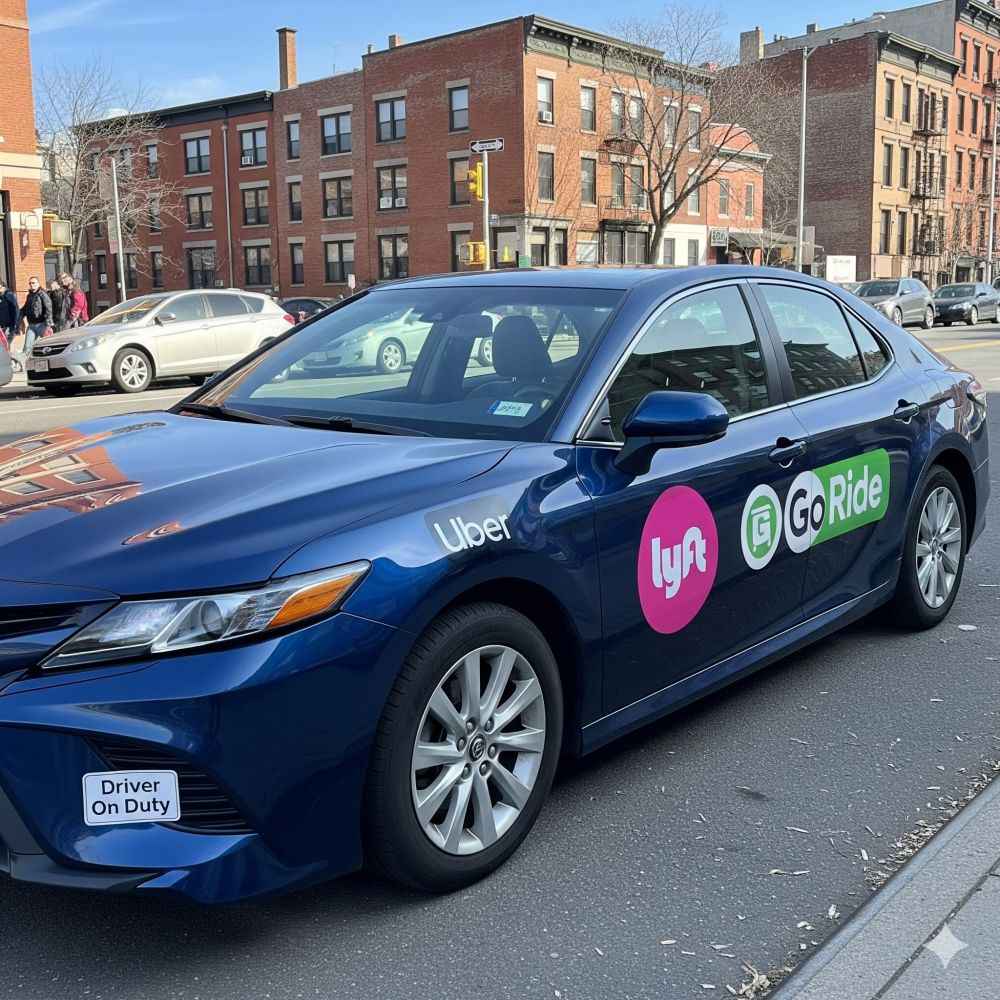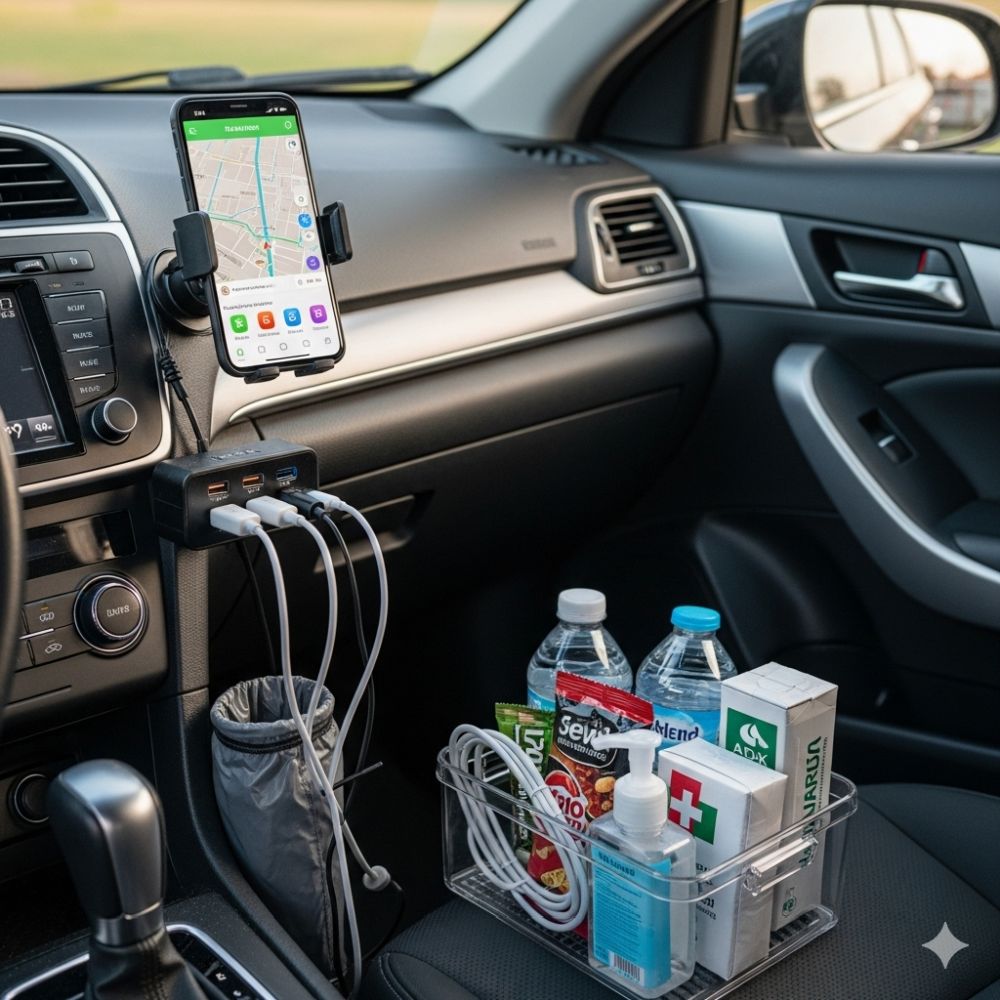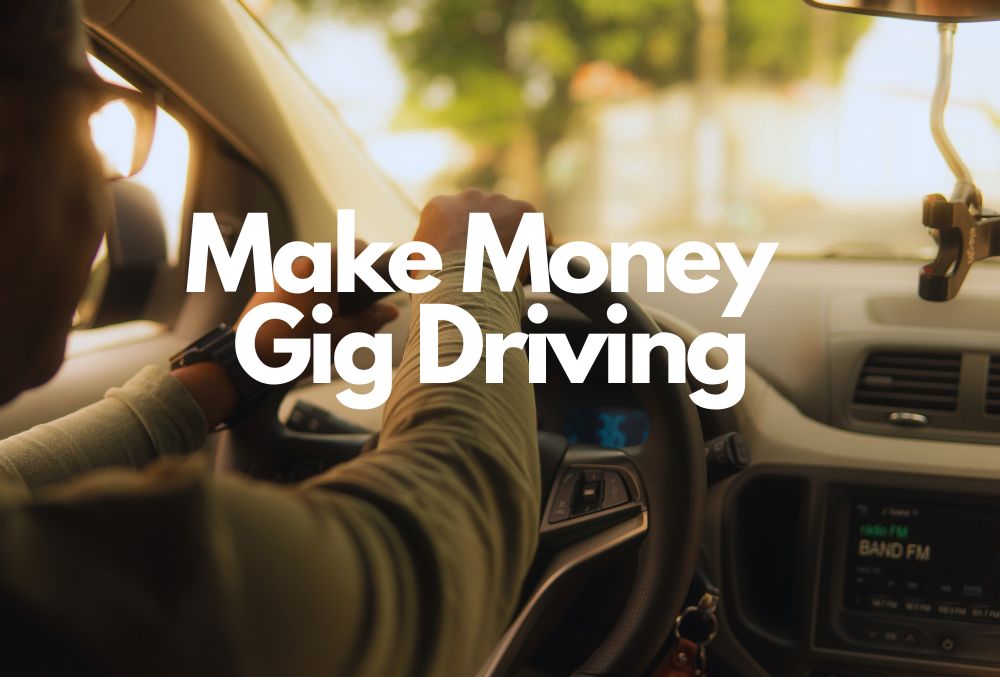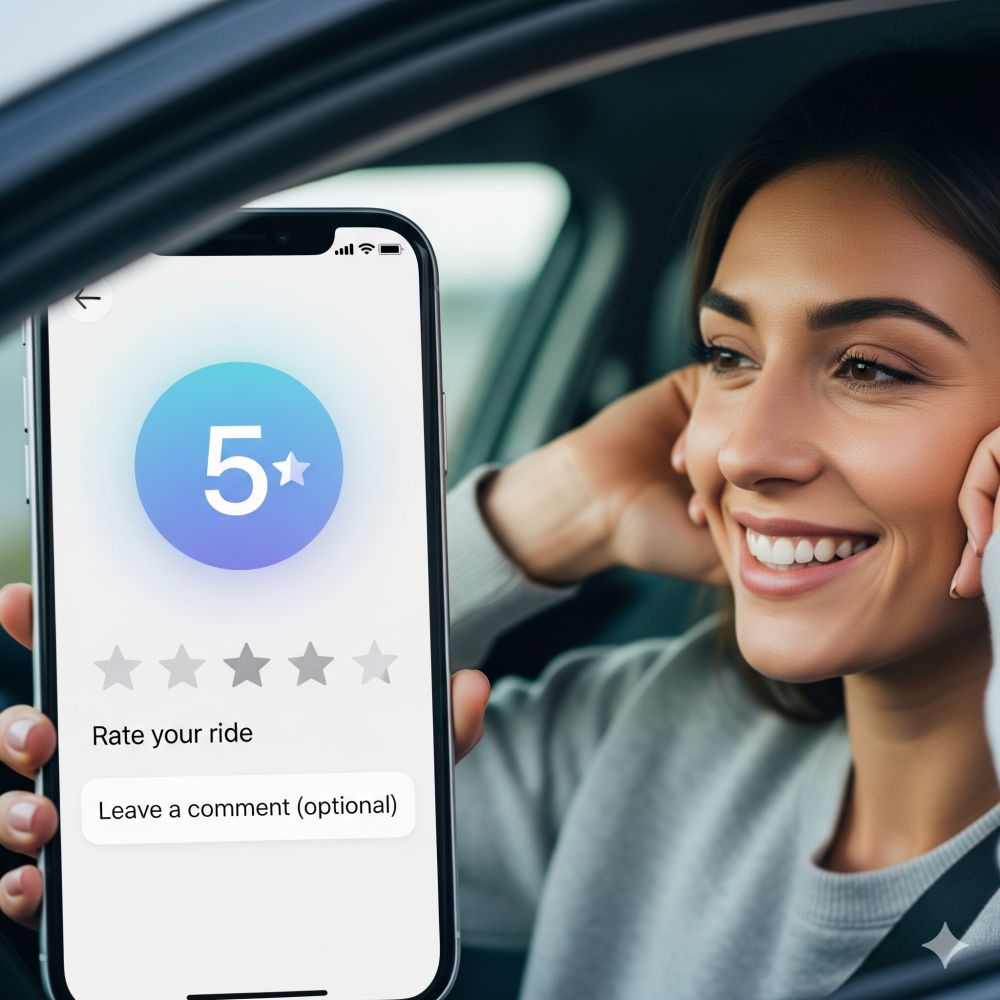How to Make Money Gig Driving: Complete Step-by-Step Guide
Gig driving is one of the most popular side hustles out there today. It’s estimated that 23 million Americans have earned money through an online platform in the last 12 months. But what does it take to make money gig driving?
To make money gig driving, start by choosing the right platform for your situation, then optimize your earnings by working during peak hours, using multiple apps strategically, and treating it like a business with proper expense tracking. Focus on high-demand times, maintaining excellent customer service, and carefully managing the hidden costs like gas, maintenance, and taxes.
Whether you’re looking to earn money driving as a full-time hustle or just want a flexible driving gig to supplement your income, this guide will show you exactly how to turn your car into a money-making machine. No fluff, no unrealistic promises – just the real deal on how to succeed in the gig driving world.
Step 1: Choose Your Gig Driving Path
Before you jump behind the wheel, you need to decide which type of driving app aligns with your goals, schedule, and vehicle. This isn’t a one-size-fits-all situation.
Rideshare Driving: The People Person’s Choice
If you don’t mind chatting with passengers and your car meets certain standards, ridesharing might be your golden ticket. The major players in this space are Uber and Lyft, both of which have their advantages.
Uber typically offers more ride requests in most markets, while Lyft often provides a friendlier driver experience and sometimes better bonuses. You’ll need a four-door vehicle that’s less than 10-15 years old (depending on your market), a clean driving record, and the ability to pass a background check.

Food Delivery: The Antisocial Driver’s Dream
Prefer minimal human interaction? DoorDash, Uber Eats, and Grubhub are calling your name. The beauty of food delivery is that almost any car works – even older vehicles that wouldn’t qualify for rideshare.
The downside? Lower base pay. But here’s the kicker – during peak hours and with the right strategy, delivery driver earnings can actually exceed rideshare income.
Grocery and Package Delivery: The Steady Eddie Option
Instacart, Amazon Flex, and Shipt offer a middle ground. You’ll make decent money, deal with minimal customer interaction, and often work during predictable time slots. Amazon Flex, in particular, pays well, but slots fill up fast.
Step 2: Meet the Basic Requirements
Let’s get the boring stuff out of the way first. Every gig driving platform has requirements, but they’re pretty standard across the board.
Vehicle Requirements
- Valid registration and insurance
- Vehicle inspection (some markets)
- Vehicle age requirements (usually 10-15 years max for rideshare)
- Four doors for most rideshare services
Driver Requirements
- Valid driver’s license
- Background check
- Minimum age (usually 18-21, depending on the platform)
- Smartphone with a data plan
Insurance Considerations
Here’s where things get tricky. Your personal auto insurance probably doesn’t cover commercial activities. Most rideshare drivers need additional coverage, which can cost $15-50 extra per month.
Some platforms provide coverage while you’re actively working, but there are gaps. Don’t skip this step – one accident without proper coverage can wipe out months of earnings.
Step 3: Sign Up and Get Approved
The signup process is surprisingly straightforward, but there are ways to speed things up.
The Application Process
- Download the driver app for your chosen platform. Start with one before you join multiple programs.
- Submit required documents (license, insurance, registration)
- Complete background check (usually takes 3-7 days)
- Vehicle inspection (if required in your market)
- Complete any required training modules
Pro tip: Apply to multiple platforms simultaneously. Getting approved for a multi-app gig driving is the fastest way to maximize your earning potential.
Documents You’ll Need
- Driver’s license
- Vehicle registration
- Insurance documentation
- Bank account for direct deposit
- Social Security number for tax reporting
Step 4: Set Up Your Vehicle for Success
Your car is now your office, and first impressions matter – especially for rideshare driving.
Essential Gig Driver Supplies
| Item | Purpose | Estimated Cost |
|---|---|---|
| Phone mount | Navigation and safety | $15-30 |
| Car charger | Keep devices powered | $10-20 |
| Dash cam | Protection and evidence | $50-150 |
| First aid kit | Safety and passenger confidence | $15-25 |
| Water bottles | Passenger amenities (rideshare) | $5-10 |
| Phone charger cables | Passenger convenience | $15-30 |
| Cleaning supplies | Vehicle maintenance | $20-60 |
| Insulated bags | Food delivery quality | $25-50 |

Vehicle Maintenance Tips
Car maintenance for gig drivers is crucial. You’re putting serious miles on your vehicle, so stay ahead of:
- Oil changes (every 3,000-5,000 miles)
- Tire rotations and replacements
- Brake inspections
- Regular cleaning (inside and out)
Step 5: Master the Art of Earnings Optimization
This is where average drivers separate themselves from the pros. Making good money gig driving isn’t about working more hours – it’s about working smarter.
Peak Hour Strategy
Every market has seasonal trends in gig driving, but some patterns are universal:
- Morning rush (7-9 AM): Business commuters
- Lunch rush (11 AM-2 PM): Food delivery goldmine
- Evening rush (5-7 PM): Commuters heading home
- Late night (10 PM-2 AM): Bar crowd and weekend warriors
Location Intelligence
Position yourself strategically:
- Airport queues for long, profitable rides
- Business districts during lunch for quick trips
- Entertainment areas on weekends, sports games, or concerts
- Residential areas during morning rush
The Multi-App Advantage
Here’s where a multi-app driving strategy becomes your secret weapon. Running multiple apps simultaneously can increase your earnings by 30-50%, but you need to be smart about it.
Start with one app, then add others as you get comfortable. Never accept rides from multiple platforms at once – that’s a quick way to get deactivated.
Step 6: Maximize Your Tips and Ratings
Customer service for gig drivers directly impacts your bottom line. High ratings mean more ride offers and potential bonuses.
Rideshare Rating Boosters
- Keep your car clean and odor-free
- Offer phone chargers and water
- Know your city well
- Be conversational but read the room
- Take the route passengers prefer
Delivery Driver Excellence
- Use insulated bags for hot food
- Communicate about delays
- Follow delivery instructions precisely
- Maximize tips as a delivery driver by being prompt and courteous
Step 7: Handle the Business Side
You’re not just a driver – you’re running a small business. Taxes for gig workers can be tricky, but staying organized saves you money. This is why you need to find a great accountant. Here are a few things you could deduct.
Tax Deductions You Can’t Ignore
- Mileage (standard rate or actual expenses)
- Phone bill (business portion)
- Car washes and maintenance
- Supplies and equipment
- Insurance premiums
- Or anything else you spend on your business
Record Keeping
Track everything:
- Miles driven for work
- Gas receipts
- Maintenance costs
- Equipment purchases
- Daily earnings
- I even take pictures of the gas pump to record the amount I paid and the gallons of full I bought
Apps like Stride or MileIQ can automate most of this tracking.
Step 8: Scale Your Gig Driving Income
Once you’ve mastered the basics, it’s time to think bigger.
Advanced Earning Strategies
Car advertising income through companies like Wrapify or Carvertise can add $200-400 monthly to your earnings. You literally get paid to drive with ads on your car.
Consider vehicle rental for gig work platforms like Turo if you have multiple vehicles. Rent your spare car to other gig drivers and earn passive income.
Alternative Gig Platforms
Don’t limit yourself to the obvious choices:
- CitizenShipper: Transport items for people moving
- Roadie: Same-day delivery for retailers
- HopSkipDrive: Rides for kids (higher pay, strict requirements)
Step 9: Stay Safe and Protected
Rideshare safety tips aren’t just about following company guidelines – they’re about protecting your livelihood.
Safety Essentials
- Always verify passenger identity
- Trust your instincts – cancel if something feels off
- Keep doors locked until pickup confirmation
- Avoid confrontations at all costs
- Install a dash cam for protection
Health and Wellness
Gig driving is physically demanding. Take care of yourself:
- Stay hydrated
- Take regular breaks
- Stretch frequently
- Maintain good posture
- Limit consecutive driving hours
Step 10: Track and Optimize Your Performance
Data is your friend. Most flexible driving jobs provide earnings summaries, but dig deeper.
Key Metrics to Monitor
- Hourly earnings (after expenses)
- Miles per dollar earned
- Peak hour performance
- Customer ratings and feedback
- Acceptance rate vs. earnings
Free Resource: Here is a free spreadsheet you can use to help you check your expenses and earnings.
Continuous Improvement
Review your performance weekly:
- Which hours are most profitable?
- What routes generate the best tips?
- Which platforms pay better in your market?
- Are you spending too much on gas?
Hidden Costs You Need to Know
Let’s talk about the elephant in the room – hidden costs of gig driving. The apps show you gross earnings, but your net income tells the real story. At the end of the month, you’ll want to crunch the numbers and see how much you actually made.
Major Expenses
- Gas: 15-25% of gross earnings
- Vehicle depreciation: Often overlooked but significant
- Maintenance and repairs: Increased frequency due to high mileage
- Insurance: Additional commercial coverage
- Taxes: Self-employment tax plus income tax
Creating a table with example monthly expenses and gross earnings for a ridesharing business is a great way to visualize the financial aspects of the work. Below is a table detailing the common costs associated with being a gig driver, using the items you provided.
Example Monthly Rideshare Business Expenses
| Expense Category | Example Monthly Cost | Percentage of Gross Earnings | Description |
| Gas | $400 – $600 | 15% – 25% | The decrease in your vehicle’s value due to high mileage and wear and tear, is a significant but often overlooked expense. |
| Vehicle Depreciation | $250 – $450 | Varies | The decrease in your vehicle’s value due to high mileage and wear and tear is a significant but often overlooked expense. |
| Maintenance & Repairs | $150 – $250 | Varies | Includes routine services like oil changes and tire rotations, as well as unexpected repairs due to the increased frequency of use. |
| Insurance | $100 – $200 | Varies | This includes the cost of specialized commercial or rideshare insurance, which is often required in addition to personal car insurance. |
| Taxes | Varies | 15.3% + Income Tax | As an independent contractor, you’re responsible for both the employer and employee portions of Social Security and Medicare taxes (self-employment tax), in addition to standard income tax. |
Note: The gross earnings and expenses in this table are hypothetical examples and can vary widely based on your location, hours worked, vehicle type, and the platform you drive for.
FAQ Section
How much can I realistically make gig driving?
How much do Uber drivers make varies widely by market and strategy. In major cities, experienced drivers earn $15-25 per hour after expenses. Suburban markets might see $10-18 per hour. The key is optimizing your approach – tips for gig drivers can easily boost earnings by 20-30%.
Can I do multiple apps at once?
Absolutely! Multi-app gig driving is the norm among successful drivers. Just never accept rides from multiple platforms simultaneously. Most pros run 2-3 apps and choose the best available ride.
Do I need my own car?
Not necessarily. Vehicle rental for gig work services like Turo and even some rental companies offer gig-friendly options. However, rental costs can significantly impact your profits.
Is gig driving safe?
Is gig driving safe? Overall, yes, but you need to be smart about it. Follow platform safety guidelines, trust your instincts, and invest in a dash cam. Most drivers never experience serious issues.
What about insurance?
Insurance requirements vary by platform and state. Most companies provide coverage while you’re actively working, but gaps exist. Consider rideshare-specific insurance additions to your personal policy.
How do taxes work?
As an independent contractor, you’ll receive 1099 forms and pay self-employment taxes. The good news? Lots of deductions. Track your mileage, gas, maintenance, and equipment purchases.
The Bottom Line: Your Roadmap to Gig Driving Success
Making money gig driving isn’t rocket science, but it’s not as simple as “download app, start driving” either. Success comes from treating it like the business it is.
Start with one platform, master the basics, then expand your operation. Focus on customer service for gig drivers, track your expenses religiously, and always prioritize safety. The drivers making serious money aren’t necessarily working more hours – they’re working smarter.
Flexible driving gigs offer genuine opportunities to earn decent money on your own schedule. With the right approach, realistic expectations, and dedication to continuous improvement, your car can become a reliable income source.
Ready to get started? Download your first app today, but remember – this is a marathon, not a sprint. Take time to learn your market, optimize your strategy, and most importantly, stay safe out there.
The road to gig driving success starts with a single ride. Make it count.








